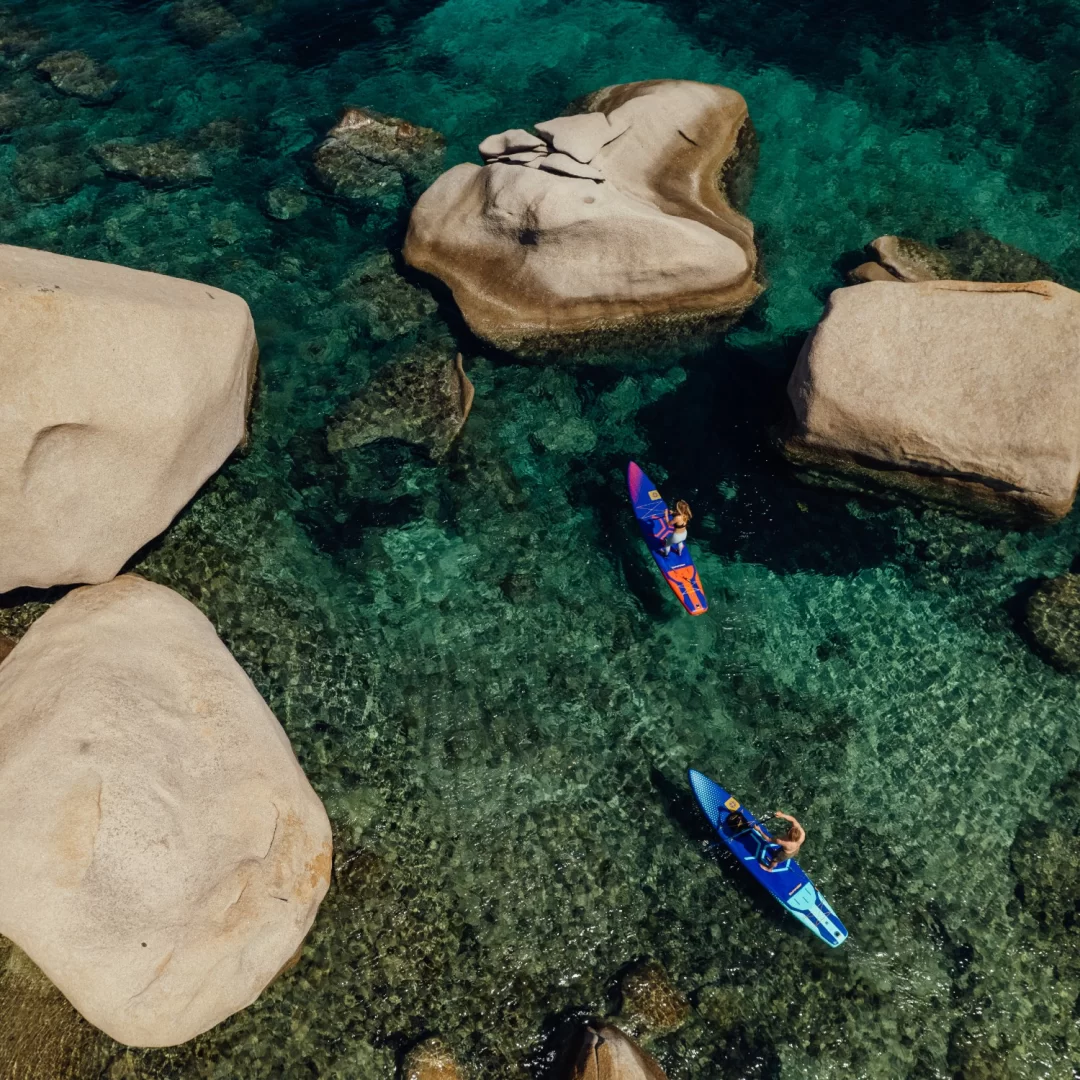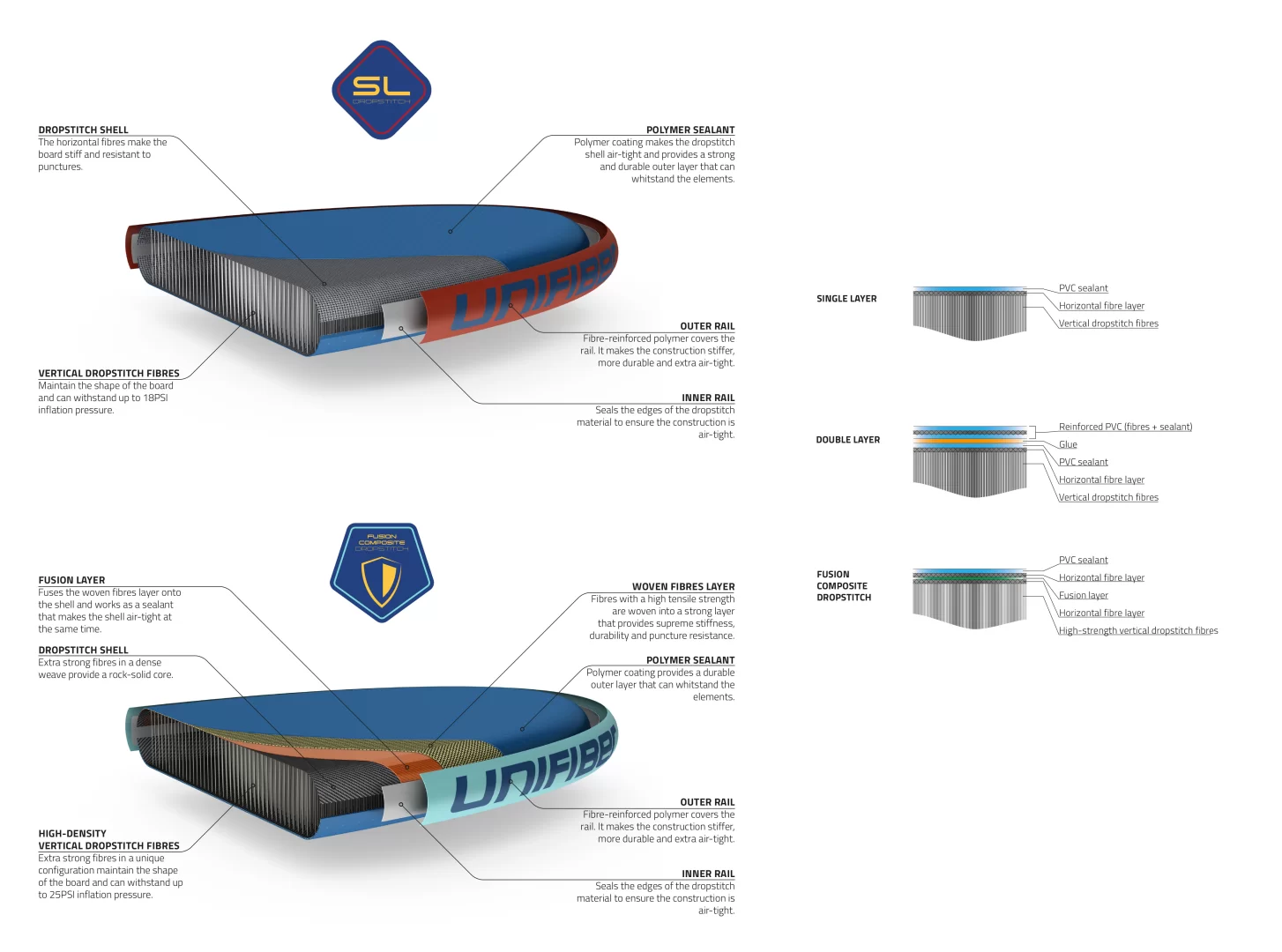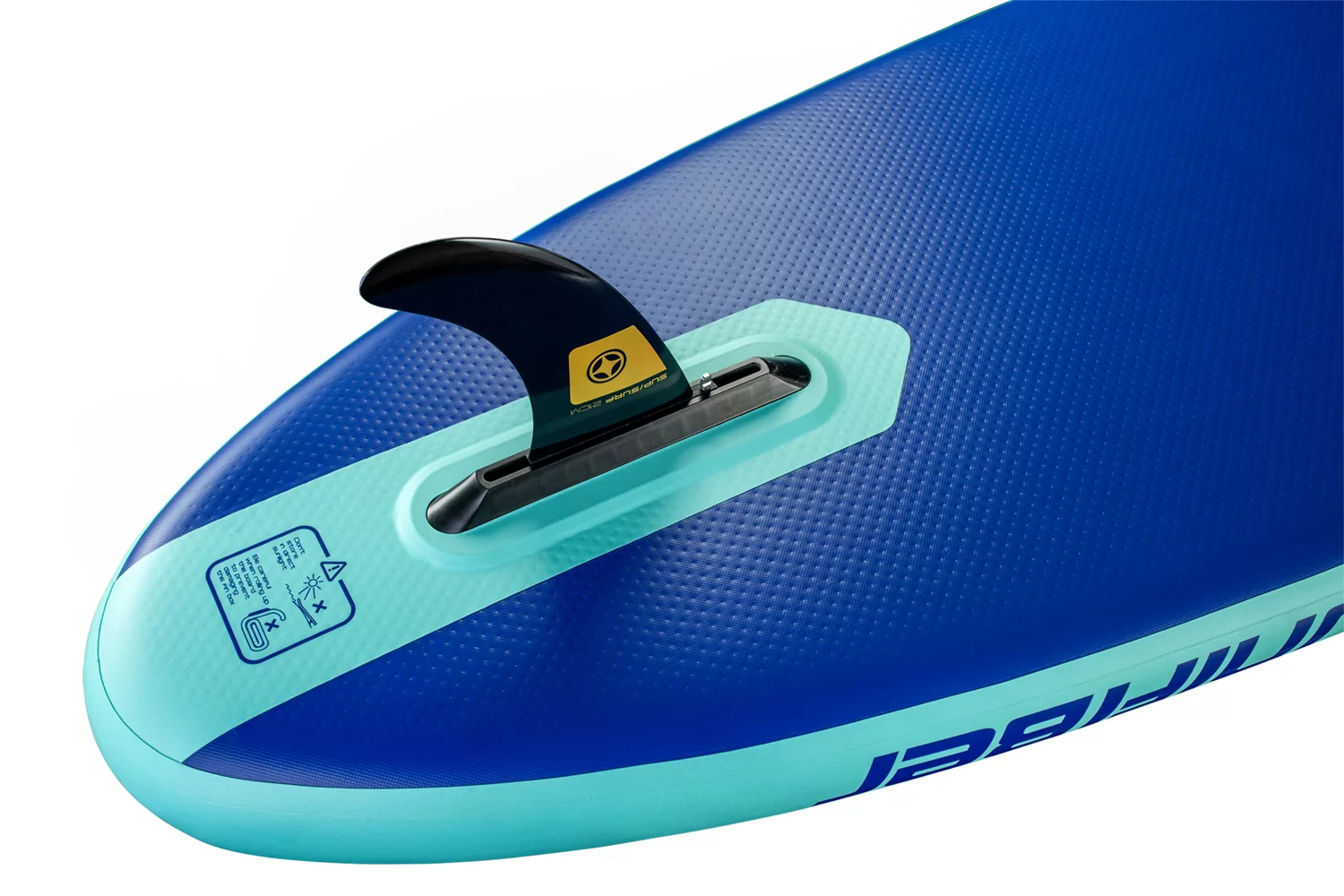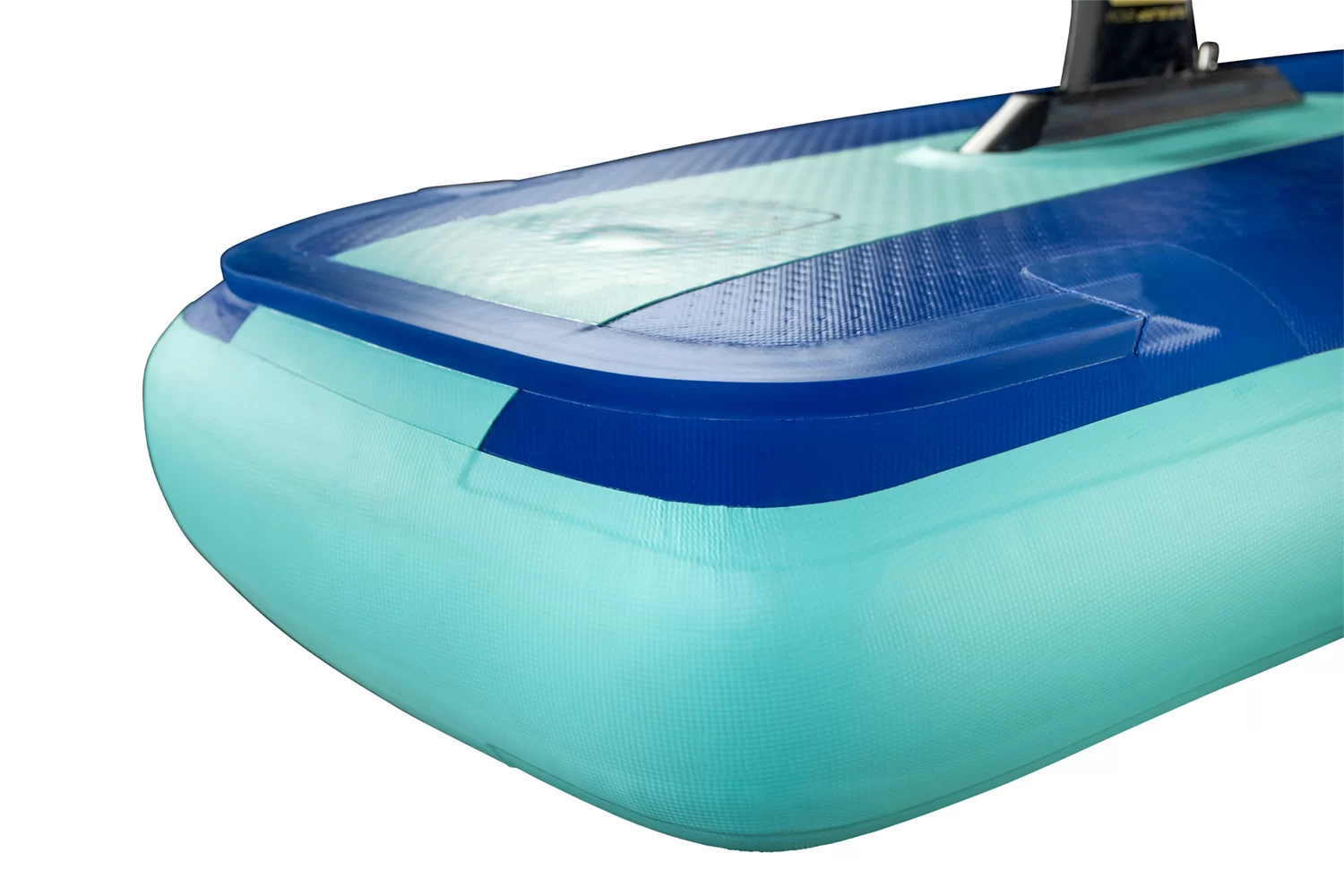Inflatable SUP Boards
You can have fun on an inflatable board in a wide range of conditions, enjoying it in different ways. Unifiber have a full range of inflatable boards to ensure a perfect fit for your requirements and style.
This page explains the different board types and their specifications, so that you can make the right choice.
Board types
- All-round SUP. This is the ideal board for beginners, and for advanced paddlers who value versatility. You can paddle around on flat water, explore the local area, or try to catch a wave. These boards have average lengths and widths, and “comfortable” volumes.
- WindSUP. An all-round SUP with the possibility to fix a windsurf sail. Ideal to paddle around on flat water, or harness wind power to glide along. The removable centre fin prevents sideways drift when windsurfing.
- Touring/Racing SUP. Made for speed and maximum gliding distance. The boards are long and narrow to minimize drag, and are constructed a little thicker for extra stiffness.
- Wave SUP. Although some brands have inflatable SUP boards that are dedicated for wave riding, it is impossible to come close to the performance of hard (epoxy) SUP surfboards. The production techniques for inflatable boards simply don't allow the dynamic board shape and sharp rails that are required to make carving turns on a wave.
- Yoga/exercise SUP. The boards are wider to make them more stable. They also have some convenient features, such as an extra-large EVA patch and a strap to securely store your paddle.

Length, Width, Thickness and Volume
The dimensions of a board are the most important pointers to understand what it does best. It’s all about finding the right balance:
All-round SUP. This is the ideal board for beginners, and for advanced paddlers who value versatility. You can paddle around on flat water, explore the local area, or try to catch a wave. These boards have average lengths and widths, and “comfortable” volumes.
WindSUP. An all-round SUP with the possibility to fix a windsurf sail. Ideal to paddle around on flat water, or harness wind power to glide along. The removable centre fin prevents sideways drift when windsurfing.
Touring/Racing SUP. Made for speed and maximum gliding distance. The boards are long and narrow to minimize drag, and are constructed a little thicker for extra stiffness.
Wave SUP. Although some brands have inflatable SUP boards that are dedicated for wave riding, it is impossible to come close to the performance of hard (epoxy) SUP surfboards. The production techniques for inflatable boards simply don't allow the dynamic board shape and sharp rails that are required to make carving turns on a wave.
Yoga/exercise SUP. The boards are wider to make them more stable. They also have some convenient features, such as an extra-large EVA patch and a strap to securely store your paddle.
Board construction
The way a board is constructed influences the stiffness, weight and durability. Stiffness is very important, as a flat board has much less drag than a board that bends under the load of the surfer.
All inflatable boards are made with “dropstitch” PVC. This material is made of 2 layers of fibre-reinforced PVC that are connected by vertical threads (see below image). The length of these threads define the thickness of the board. Because all the threads have the same length, the top and bottom of the boards are perfectly flat. The scoop and/or rocker of the board are made by the shape of the side wall, and by making the top layer a bit shorter than the bottom layer.
There are 3 main dropstitch technologies:
- Single layer (SL). Simple and budget-friendly. Best suited for boards that will receive light recreational use.
- Double layer. The board is reinforced by an extra layer of fibre-reinforced PVC laminate. Heavier than single layer, but much stiffer and much more durable.
- Fusion Composite Dropstitch (FCD). The best available. More fibres, less PVC and less glue than the double layer construction. This makes the boards lighter, stiffer and very durable.
Some brands add stringers with Kevlar or Dyneema fibres to make the boards even stiffer. But this also makes the boards very expensive.

Price vs quality
A higher price doesn’t necessarily make a board better. However, there are a lot of cheap inflatable boards on the market with poor build quality and sub-standard quality control. A badly built board can lead to life-threatening situations, so be wise when buying an inflatable board. We advise that you buy from a shop that specialises in watersports. They can help you find a suitable and reliable board that also represents good value.
Fin set-up
Each type of board has its own ideal fin set-up:
- Single fin. One large fin. This set-up is ideal for touring and racing. The drag is kept to a minimum.
- Thruster. One large fin and two small side fins. This set-up was adopted from surfboards. The side fins make the board easier to turn. But since inflatable SUPs are not really made for wave-riding, the side fins are not really relevant.
- Single fin + centre fin. One large fin at the rear end of the board, plus one large fin placed in the middle of the board. This set-up is ideal for boards that take a windsurf sail. The centre fin helps to prevent sideways drift.

PVC rail
A sharp edge on the tail improves the water release, decreasing the drag of the board. This is helpful for higher top speeds and for longer glides.

Why Choose Unifiber iSUPs?
Unifiber offers a comprehensive SUP range to make sure that all needs and budgets are catered for without compromising on quality.
We maintain a extremely high standard of quality control. In addition to numerous checkpoints during manufacturing, we do a final 72-hour test to check for any possible leakage. For every single board.
Fusion Composite Dropstitch technology is used in our boards to provide top-rated strength and stiffness, and minimal weight.
Unifiber also offers a comprehensive 1-year unconditional warranty on all iSUP models and 2-years coverage for manufacturing faults.